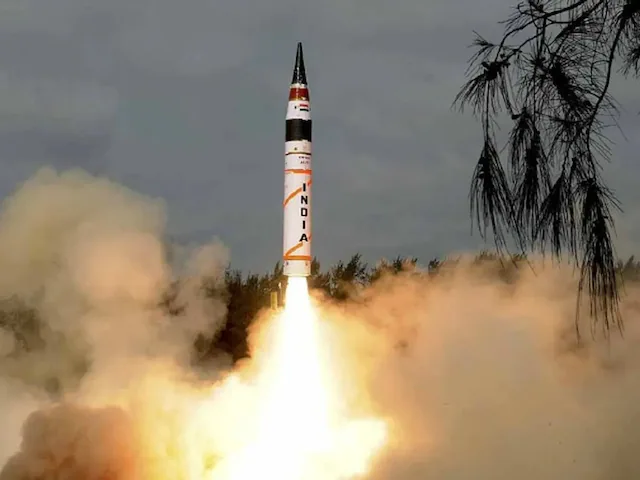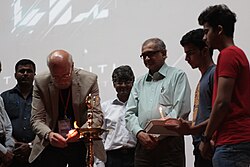Blog By: Priyanka Rana
Agni-5 missile
On March 11, 2024, India achieved a significant milestone by successfully testing an Agni-5 ballistic missile equipped with multiple independently targetable re-entry vehicles (MIRVs). This achievement places India in an elite group of nations, alongside the permanent members of the United Nations Security Council, who possess operational missiles with MIRV technology.
Mission Divyastra: A Successful Flight Test
The Defence Research and Development Organisation (DRDO) conducted the flight test, named Mission Divyastra, from Dr APJ Abdul Kalam Island in Odisha. Various telemetry and radar stations were employed to track and monitor the multiple re-entry vehicles carried by the Agni-5 missile. The mission was declared a success based on the designated parameters.
Understanding MIRV Technology
MIRV technology, developed during the Cold War era, allows a single missile to deliver multiple nuclear warheads to separate targets. Each warhead is carried in a separate re-entry vehicle and can be programmed to hit a specific target.
Missiles armed with MIRVs can release warheads at different speeds and directions, enabling them to strike targets as far apart as 1,500 kilometers.
Significance of MIRV Success for India
The successful integration of MIRV technology into the Agni-5 missile system has two key implications for India’s strategic capabilities:
Enhanced Deterrence:
MIRVs make defending against incoming missiles more challenging for adversaries. The presence of multiple warheads and decoys can overwhelm ballistic missile defense (BMD) systems, increasing the likelihood of successful strikes on intended targets. This capability strengthens India’s deterrence posture, particularly against China, which possesses BMD capabilities.
Increased Payload Capacity:
While the exact number of nuclear warheads an Agni-5 MIRV can carry is not publicly disclosed, reports suggest that it can strike at least three different targets spread over a large area. The missile’s payload capacity can be increased if required, allowing for the deployment of additional warheads and decoys.
Agni-5’s Range: IRBM or ICBM?
Officially, the Agni-5 is classified as an intermediate-range ballistic missile (IRBM) with a range of 5,000 kilometers. However, there have been indications that the missile’s actual range may be greater, potentially qualifying it as an intercontinental ballistic missile (ICBM) with a range exceeding 5,500 kilometers. Chinese officials have consistently considered the Agni-5 to be an ICBM, claiming its range to be 8,000 kilometers.
Recent reports suggest that India has been working on reducing the weight of the Agni-5 missile, which could significantly extend its range. The replacement of hydraulic actuators with lighter electro-mechanical actuators in the missile’s first stage is one such weight-saving measure. As the Agni-5 becomes lighter, its range is expected to increase further.
Future Prospects: MIRVs and Submarine-Launched Ballistic Missiles
The successful integration of MIRV technology into the Agni-5 missile system opens up new possibilities for India’s strategic arsenal. Submarine-launched ballistic missiles (SLBMs) are particularly well-suited to benefit from MIRVs due to the limited space available on submarines and their higher survivability in the event of a nuclear attack.
Female Power
The project was led by a female scientist from DRDO, with involvement from other women scientists. Shankari Chandrasekaran was the project director, while Sheena Rani was the programme director for Agni-5.
At DRDO’s Advanced Systems Laboratory, Sheena Rani led the development of the Agni-5 missile equipped with MIRV technology.

13
MarAgni-5 missile
Mar 13, 2024Recent Blog
The TechKritiApr 26, 2025
India’s First Quantum Computing VillageApr 24, 2025
India’s Achievement In QKDApr 22, 2025
The V2G TechnologyApr 21, 2025
Country’s Specific Domain By GoogleApr 19, 2025




